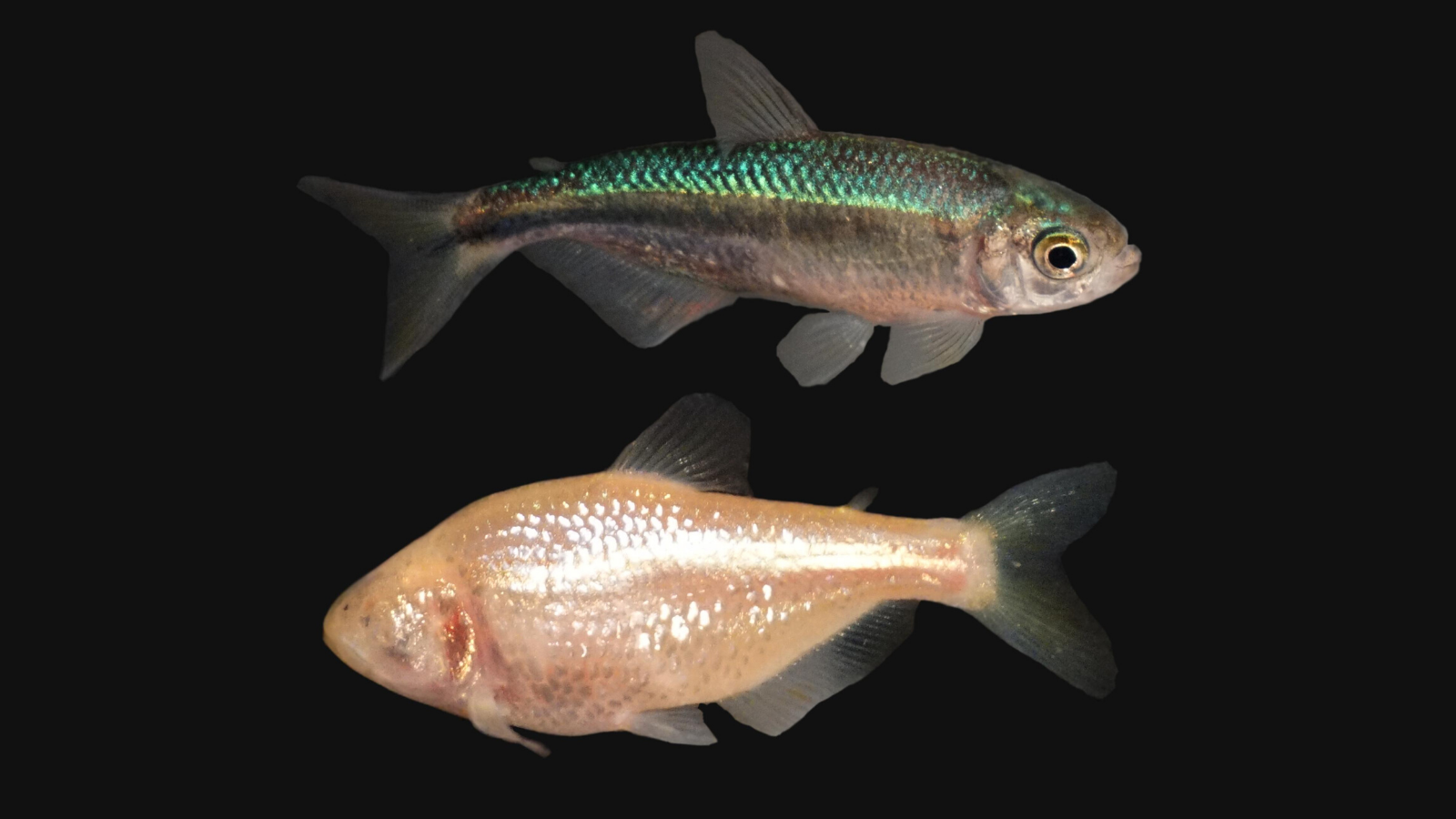A widely accepted model for the evolution of cave animals posits colonization by surface ancestors followed by the acquisition of adaptations over many generations.
However, the speed of cave adaptation in some species suggests mechanisms operating over shorter timescales. To address these mechanisms, the researchers studied Astyanax mexicanus, the Mexican Tetra also known as the Mexican Blind Cavefish.
The Mexican tetra is a fish that has two forms: a surface-dwelling form, which has eyes and silvery grey appearance, and a cave-dwelling form, which is blind and has lost its pigmentation.
Recent studies have shown that the cave-dwelling form evolved rapidly within the last 200,000 years from an ancestor that lived at the surface.
The recent evolution of the cave-dwelling form of the tetra poses an interesting evolutionary question: how did the surface-dwelling ancestor of the tetra quickly adapt to the new and challenging environment found in the caves?
'Phenotypic plasticity' is a phenomenon through which a single set of genes can produce different observable traits depending on the environment. An example of phenotypic plasticity occurs in response to diet: in animals, poor diets can lead to an increase in the size of the digestive organs and to the animals eating more.
To see if surface-dwelling tetras can quickly adapt to cave environments through phenotypic plasticity, Bilandžija et al. have exposed these fish to complete darkness (the major feature of the cave environment) for two years. After spending up to two years in the dark, these fish were compared to normal surface-dwelling and cave-dwelling tetras.
Results revealed that surface-dwelling tetras raised in the dark exhibited traits associated with cave-dwelling tetras.
These traits included changes in the activity of many genes involved in diverse processes, resistance to starvation, metabolism, and levels of hormones and molecules involved in neural signaling, which could lead to changes in behavior.
However, the fish also exhibited traits, including an increase in the cells responsible for pigmentation, that would have no obvious benefit in the darkness.
Even though the changes observed require no genetic mutations, they can help or hinder the fish’s survival once they occur, possibly determining subsequent evolution.
Thus, a trait beneficial for surviving in the dark that appears simply through phenotypic plasticity may eventually be selected for and genetic mutations that encode it more reliably may appear too.
These results shed light on how species may quickly adapt to new environments without accumulating genetic mutations, which can take hundreds of thousands of years.
They also may help to explain how colonizer species succeed in challenging environments.
The principles described in the new study can be applied to different organisms adapting to new environments, and may help understand the role of phenotypic plasticity in evolution.
Source: https://elifesciences.org/digests/51830/from-the-surface-to-the-cave


